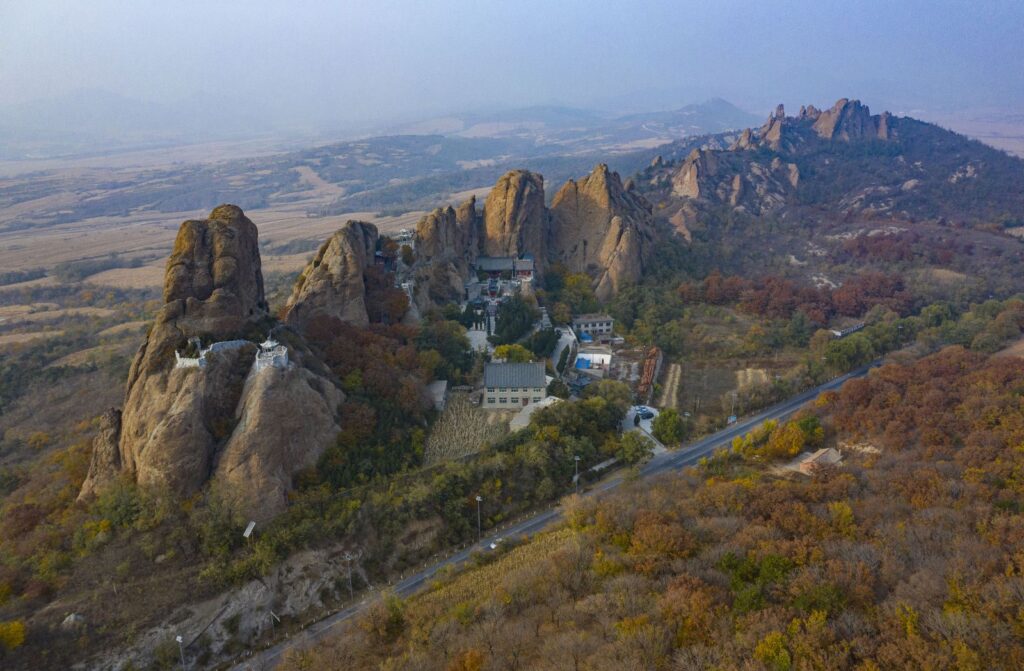Cuiyan Mountain, a national AAA-level scenic spot, was originally named Cuo Ya Mountain. It is locally referred to as Ya Ba Shi Mountain due to the presence of two small peaks on either side of the main peak, resembling the shape of the character ‘ya’ (eight). The rocks of Cuiyan Mountain display a brownish-green hue, and during the summer and autumn seasons, they are densely covered with moss, making the peaks lush and the scenery picturesque.
Due to its serene and beautiful natural environment, Cuiyan Mountain has long been a place of interest for those seeking spiritual cultivation and breath refinement. It has thus become an ideal location for monks and Taoist priests to build temples and immerse themselves in practice. In the Han Dynasty, farmers established a temple on the eastern foot of the mountain, which was later destroyed by wars. During the Tang and Song dynasties, the temple was repaired, and its incense burned continuously, leading to its gradual prosperity.
By the early years of the Liao Dynasty, under the reign of Emperor Daozong, the temple suffered from years of war and neglect, falling into disrepair. In the tenth year of the Dakang era (1084 AD), under the Liao Dynasty, the venerable monk Zhixun from the Daguangji Temple of Jinzhou rebuilt the temple at the foot of the mountain, naming it Qingjing Temple, which later became known as Cuiyan Mountain Temple. The temple is open to visitors from 8:00 to 18:00 all year round.


